Climate change is a pervasive and growing global threat to biodiversity, ecosystems, and the global economy.
Its multiple effects are widely felt, especially on food, water, and energy, altering the structure and function of ecosystems and the goods and services that natural systems provide to society.
Understanding the direction and magnitude of ecological responses allows human communities to anticipate these changes better and adapt as necessary to conserve water, ensure the sustainability of environmental systems, and maintain a resilient economy. A great stride that should serve as a yardstick is the Shiyang River Resources Management strategy implemented over the past decades.
The Shiyang River Basin is located in China’s Gansu Province, covering an area of about 11,000 square kilometers. It is characterized by arid and semi-arid landscapes with low rainfall, typically occurring in summer and autumn. It is bounded by two deserts, the Badain Jilin and Tengger Deserts, and the Qilian Range.
The main economic activities in the region are agricultural, with wheat, maize, and potatoes being the primary crops grown. Livestock rearing, mainly sheep and goats, is also practiced.
However, the area has suffered from severe drought and desertification for over 50 years, significantly affecting crop production and the agroecological system. This has caused migration and instability of livelihoods. Yet, consistent efforts from the Chinese government, experts, and various agencies towards rescuing the oasis areas, restoring the ecosystem, conserving water resources, and sustaining life and economic activities have been excellent.
Besides employing modern, environmentally friendly technologies, a rational balance between human life and a broad-based approach could serve as an epitome for Ghana to emulate. Some of these diversified measures towards water conservation, desertification control and prevention, ecological system sustainability, and capital-driven tourism are discussed below.
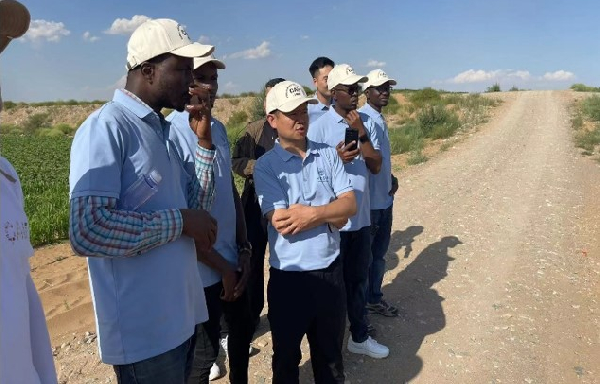
Representatives from Ghana, Nigeria, Ethiopia and Tanzania during Sino-Africa Joint Center for Arid Region Agriculture Exchange, Gansu Province.
Application and Installation of Advanced Onsite Weather Conditions Monitoring
To unlock pragmatic measures for appreciating the effective and efficient utilization of water resources and other factors that might affect technology, the Shiyang River experimentation was established.
Smart technologies, such as water utilization, rainfall monitoring, and temperature conditions, have been installed to feed into the national database.
This setup communicates real-time information on weather conditions, water utilization, crop growth, and farm performance, enabling rapid responses.
Notably, the application of drip irrigation, a highly effective strategy to save water and nutrients in the arid and semi-arid regions of the Shiyang River Basin, has provided year-round agricultural activities with high productivity.
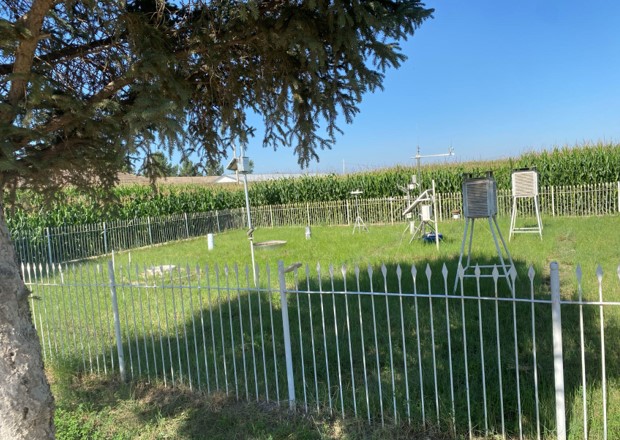
Weather database monitoring information at the China Shiyang River experimentation station of China Agricultural University
Modernized Desertification Control and Prevention
Being proactive in controlling global warming, the Shiyang River project has carried out extensive afforestation to reclaim the desert.
The project mainly focused on simplified and economical approaches, such as square planting of crop remains on the desert surface, tree planting, and planting drought-resistant crops using a drip irrigation system. These efforts have led to the restoration of 30% of degraded land.
The impact includes increased agricultural productivity, improved food security, sustained water bodies for ecosystems, and enhanced livelihoods. Additionally, efforts have been made to reward individuals engaged in reforestation to strengthen and ensure the project's sustainability and resilience.
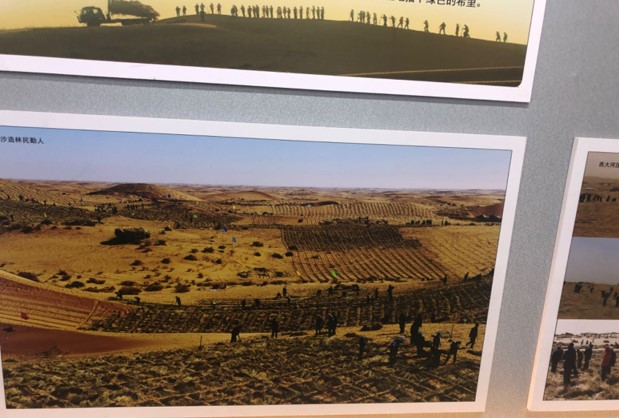
Minqin Desertification Prevention and Control Demonstration Zone Mall, planting of crop remains using square formation strategy
The Hongyashan Reservoir
The Shiyang River Project has led to the construction of a dam with a storage capacity of 1.48 million cubic meters. Constructed in 1958, the dam has played a significant role in supporting domestic, industrial, and agricultural activities.
Notably, farmers and the community have embraced the project and adopted other technologies such as rainwater harvesting, hydrological services, and irrigation techniques. These contributions have significantly reduced water wastage, optimized water storage and supply, enabled continuous farming, and sustained life.
The success of this project has been largely due to the diversion of river resources and additional water from the mountains to form the reservoir through a cost-effective technique.
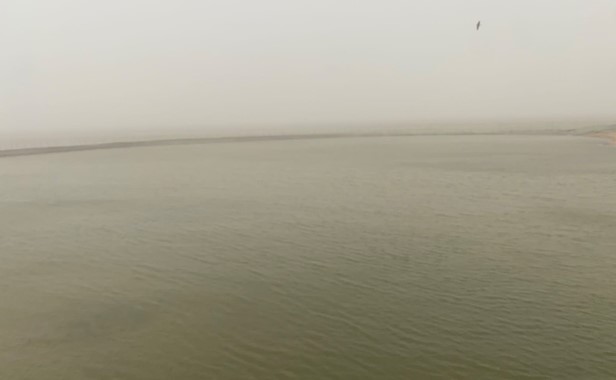
Hongyashan Reservoir constructed in 1958
Shiyang River Experimentation station
The experimentation was established to conserve rainfall and snowmelt water, ensuring efficient use of limited water resources, environmental sustainability, and economic buoyancy to preserve local livelihoods.
The station has demonstrated the use of advanced drone technology to capture high-throughput spectral images, illustrating the salinity stress of crops and providing real-time irrigation guidance.
Other studies included: Developing and experimenting with a robot for high-throughput, in-situ root phenotyping and water consumption monitoring. Optimizing regulation technology for high-density maize planting in arid areas using Coronatine Technology.
The application of these modern technologies will not only maximize the utilization of desert land but the efficient application of limited water resources in the area.
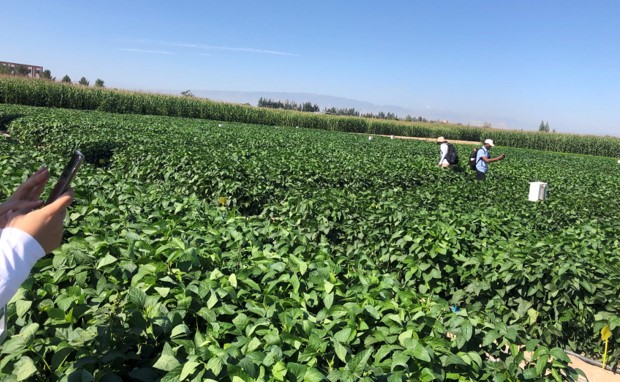
Cowpea experimentation site at Shiyang River Experimentation station of China Agricultural University
Inspired by the success of China’s Shiyang River Basin water resources utilization strategy, the simplified modernization of technologies for desert control, and biodiversity and ecosystem sustainability, Ghana, with a similar environment, could adopt these measures for economic vitality, reduction of environmental footprint, improved food security, poverty reduction, and sustaining life.
Why?
Ghana is characterized by a tropical climate, but the annual rainfall decreases as altitude increases to the north, where a savannah climate becomes dominant. Most of the country falls under the Tropical Savannas Climate and the Sub-Sahelian African moist region. The annual mean temperature ranges from 25°C to 27°C and remains fairly constant throughout the year.
Annual rainfall is as high as 2,000 mm in the southwestern part of the country but decreases towards the northeast, dropping to 1,000 mm at the northern border. Over time, Ghana has experienced changes in temperature, rainfall patterns, and increased frequency and intensity of extreme weather events such as floods, droughts, and storms.
These changes are expected to worsen, with temperature increases projected to rise and areas within 15 degrees of the equator likely to experience longer and more frequent heat waves. These impacts have significant implications for the country’s economy, food security, hydropower production, and the livelihoods of its people.
The country’s climate variability and irregular weather patterns exacerbate food insecurity and affect the rural economy at different points along the agriculture value chain, from on-farm productivity to off-farm issues ranging from policy to trade. What is more concerning is that 70% of the country’s ecological zone is covered by the Northern Savannah, which is largely dry land.
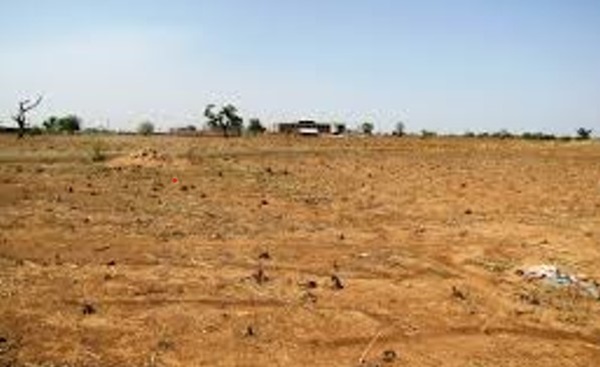
Savanna dry landscape in the Northern region, Ghana
Furthermore, between 1990 and 2005, Ghana lost about 1,931,000 hectares of forest, equivalent to 26% of its total tree cover. Additionally, 60% of the water bodies have been polluted and are in deteriorating condition, primarily due to illegal mining.
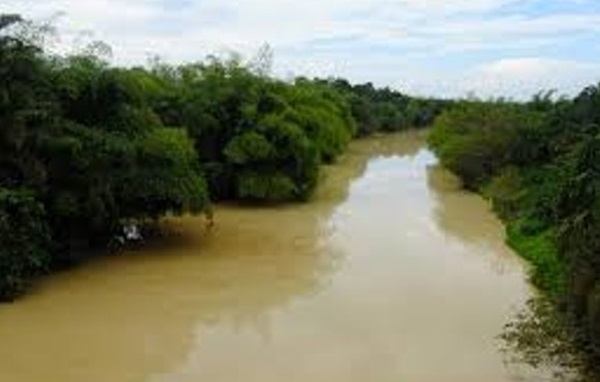
A typical state of some polluted rivers in Ghana
Although the challenges are significant, the government of Ghana has taken pragmatic measures to address the issues in water bodies, ecosystems, agricultural activities, food insecurity, and poverty reduction through initiatives such as the National Tree Planting program and other environmental policies. However, more needs to be done. The World Bank projects that Ghana will need a financial commitment of $2 billion per year to resolve these issues.
Adopting the Shiyang River Basin management strategy in combating environmental footprints, optimizing water utilization, promoting ecological stability, clean renewable energy, and poverty reduction-driven policies could save Ghana from the destruction of its food, energy, and water nexus.
With 70% of the ecological dry land in the northern part of the country, Ghana could adopt the novel practice of square planting of crop remains to reduce land degradation and increase arable land. This will significantly boost the agricultural production of major crops such as maize, millet, sorghum, and yam.
Embracing this strategy inclusively can keep the project sustainable and successful. The Shiyang River Basin project planted drought-resistant crops and trees in the desert area, coupled with drip irrigation spearheaded by the government. A similar program in Ghana, involving infrastructure investments to manage extreme weather events, can protect the region from desertification and safeguard communities from the adverse effects of climate change, reducing the exodus of locals to the southern part of Ghana.
Restoring polluted water bodies in Ghana is another critical dimension to reduce the water deficit and improve utilization. Polluted water bodies have caused multiple health effects, including cardiovascular, kidney, and lung diseases. Implementing Shiyang River Basin water resources management, such as constructing dams for irrigation systems to support agricultural productivity for both rural and industrial areas, establishing experimentation stations around water bodies to intensify soil and water salinity studies, and creating greenhouse farms will minimize water deficits through efficient utilization of water resources.
Lastly, smart technologies, such as water meters gleaned from the Shiyang River Basin project, could be adopted in Ghana to monitor water consumption and other weather information for rapid response. Advanced technology, such as Coronatine Technology and Smart Pipeline Robots, if implemented in Ghana on local and industrial farms, will maximize agricultural earnings, improve the economy and livelihoods, reduce food insecurity, ensure efficient water resources utilization, and promote ecological stability.
With the right mindset and commitment towards sustainable agriculture, water conservation measures, biodiversity conservation efforts, and inclusion agendas, Ghana can reclaim devastated land, restore polluted waters, expand shrinking agricultural land, stabilize unpredictable climate change, reduce poverty, and continue on the path of riches and prosperity for the next generation.
Opinions of Wednesday, 7 August 2024
Columnist: Ebenezer Asiamah





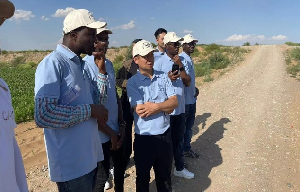

![NPP Flagbearer, Dr. Mahamudu Bawumia [L] and NDC Flagbearer John Mahama NPP Flagbearer, Dr. Mahamudu Bawumia [L] and NDC Flagbearer John Mahama](https://cdn.ghanaweb.com/imagelib/pics/869/86902869.295.jpg)











